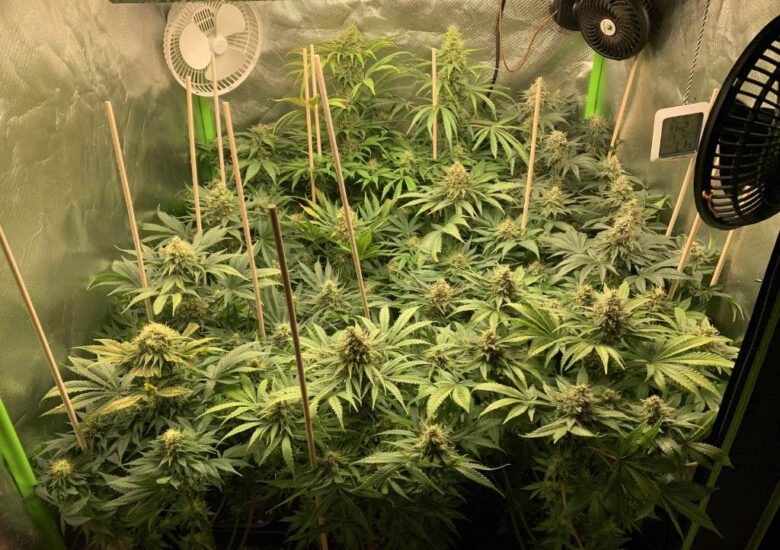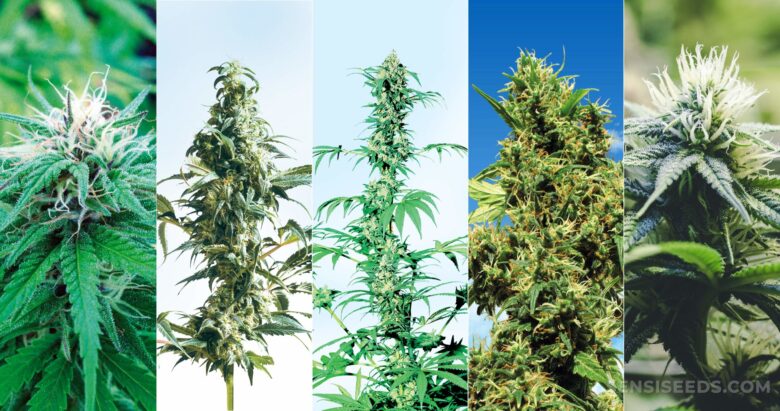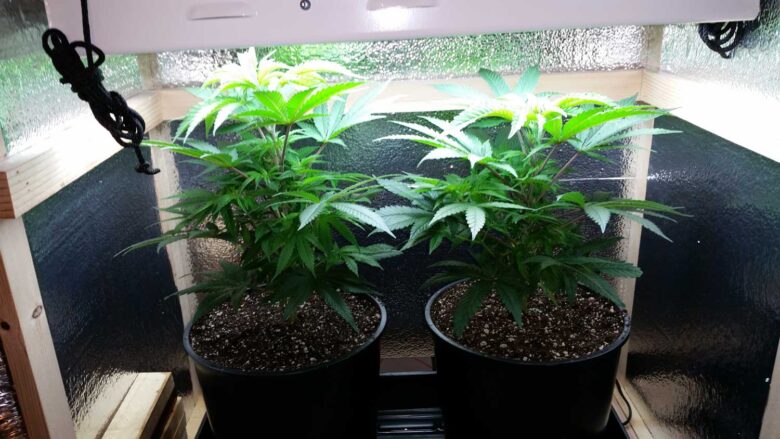As regulations surrounding cannabis continue to relax, more people in the United States are legally growing cannabis at home. Several states now allow adults to grow and process cannabis plants on residential properties. For instance, residents of California can grow up to six cannabis plants for private use.
Of course, growing marijuana at home comes with legal considerations, so make sure that you know what is permitted before you get started. Once you are fully informed about the legal restrictions in your state, you can follow this simple guide and start planting your cannabis crop.
Contents
1. Find a secure grow site

Source: macleans.ca
Before you get started, make sure that your home is a safe place to grow your plants. For example, you should make sure that your plants are away from areas where children and pets are likely to venture. Your plants should also not be in areas that are accessible to the public such as an open front yard. In some states, your plants must be hidden from public view.
Many people choose to grow their cannabis plants in a locked shed to ensure that they remain safe from unauthorized visitors and environmental threats. Growing indoors offers more control over the environment and pests but can end up costing more, while growing outdoors is cheaper but provides less control. If you plan to plant outdoors, consider erecting a privacy fence around your grow area.
2. Source the right equipment

Source: dutch-passion.blog
Having the right grow equipment is essential if you want to cultivate cannabis plants healthy at home. Although cannabis plants are relatively hardy, you still need to provide them with an environment that mimics their natural conditions as much as possible. You should also have a variety of meters to measure conditions like temperature, humidity, and soil pH levels so that you can ensure that your plants are grown in the optimum environment. If you are planning to grow indoors, you must invest in high-quality grow lights, ventilation, and other equipment. You can even purchase entire grow tent kits that provide complete climate control and LED grow lights.
3. Choose a strain
There are many different strains of cannabis plants, and these vary greatly in potency, taste, and aroma. Choosing a strain can be the most fun part of your grow project! Some strains prefer warmer temperatures and more space while others like colder temperatures and do not need as much room. If you have a local cannabis seed bank, you can get expert advice on the strains that are easiest to grow in your region. The strains that are suited for your region are also typically more resistant to the pests in your area. Every strain has its unique life cycle, so make sure that you fully understand how long you will have to wait between planting and maturity before you start anticipating a rich harvest.
4. Prepare the growing medium

Source: sensiseeds.com
One of the most important aspects of successful cannabis cultivation is the medium in which the plants are grown. The traditional growing medium for cannabis is, of course, soil. But not just any soil—cannabis plants require soil that drains well and is rich in nutrients. Some soils have been specially formulated for cannabis cultivation, but you can also create your own growing soil by mixing vermicompost with organic topsoil. Many growers who cultivate cannabis indoors prefer to eliminates soil altogether. They use a hydroponic system instead that delivers nutrient-rich water to the roots of the plants.
Most hydroponic systems consist of a reservoir of water, a water pump, and a closed loop of plastic tubing into which the plants are inserted. A hydroponic system can be complicated to set up. But once it is up and running, it is a very efficient method of growing cannabis.
5. Understand the growth stages
Every cannabis plant goes through several stages as it develops from a seed into a mature, budding plant. At each stage of the plant’s development, it is necessary to provide it with the appropriate care and nutrition to ensure healthy growth.
During the seedling stage, the plant should be treated gently; be careful not to water or fertilize it too much. Once the plant is in its vegetative stage, it can be moved into a bigger container and given a trellis or cage to support its growth. It should be fed periodically with nutrients. Trim the top of the plant and prune dead branches to allow it to grow thicker and bushier.
When your cannabis plant is ready to flower, shorten the light cycle and increase the percentage of phosphorus and potassium in your fertilizer. This will assist with budding. Water it more frequently and monitor it carefully to ensure that it is healthy enough to produce high-quality buds.
6. Enjoy the harvest

Source: growweedeasy.com
When you are confident that the buds are ready to be harvested, carefully cut the branches, and hang them up in a cool, dry place. When the buds are completely dry, you will be able to smell their distinctive scent. Gently remove each bud from the branch and allow it to cure for a few weeks. Curing will prevent mold from forming on the buds and allow them to be stored for a long time without spoiling. And there you have it, your very own batch of delicious homegrown cannabis!
7. Monitor your plants
Even after your cannabis plants are harvested, it is important to continue to monitor them. Check for pests and diseases regularly, and make sure to treat them quickly if any problems arise. Also, make sure that your grow area is secure and that all equipment is in good working order. Finally, stay informed about the latest regulations in your state and make sure that your grow is compliant.
Growing cannabis at home is a rewarding and enjoyable experience. With the right planning and setup, you can have a bountiful harvest of high-quality cannabis in no time. Just make sure that you understand the applicable laws in your area and take the necessary precautions to keep your grow safe.
